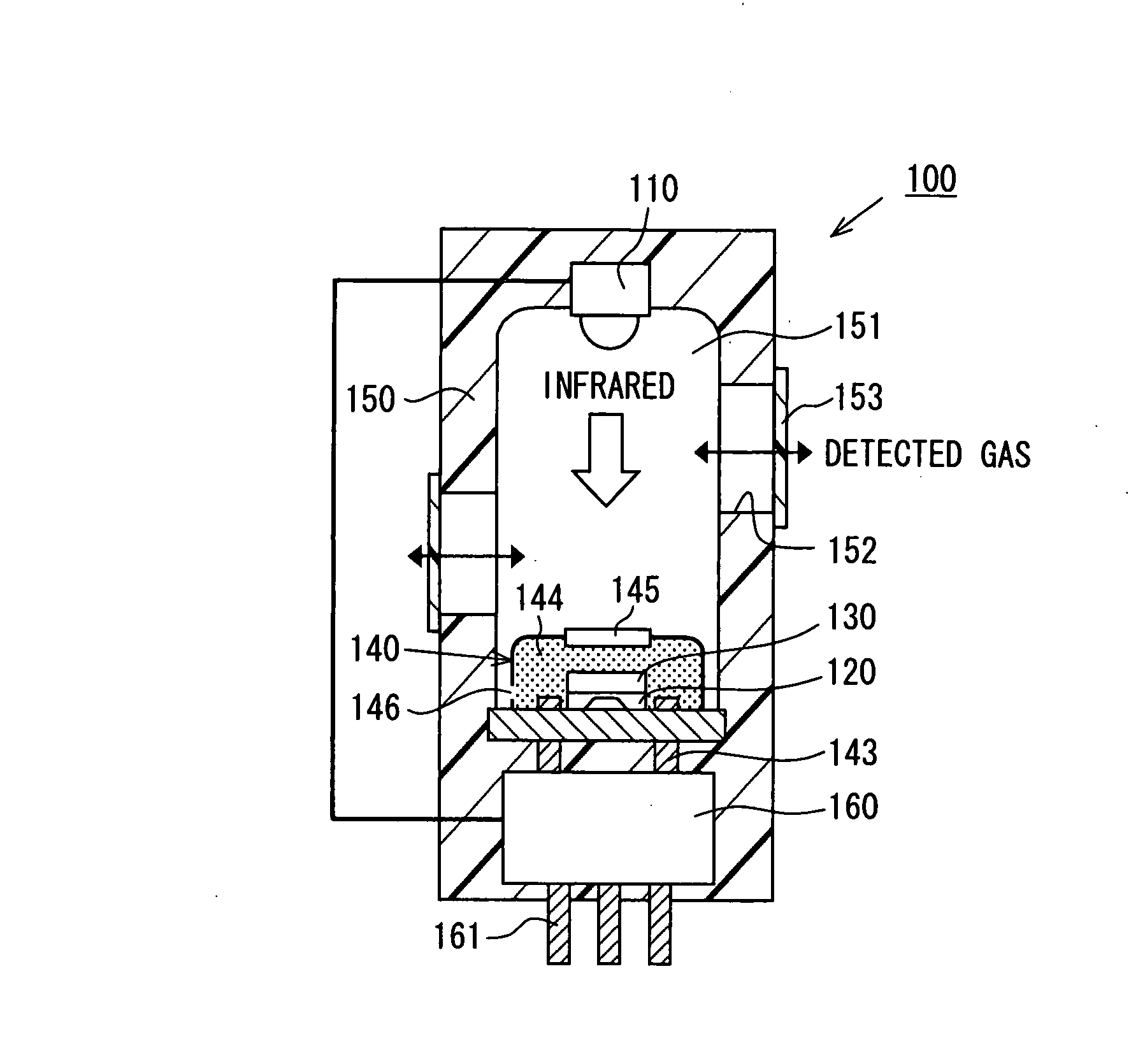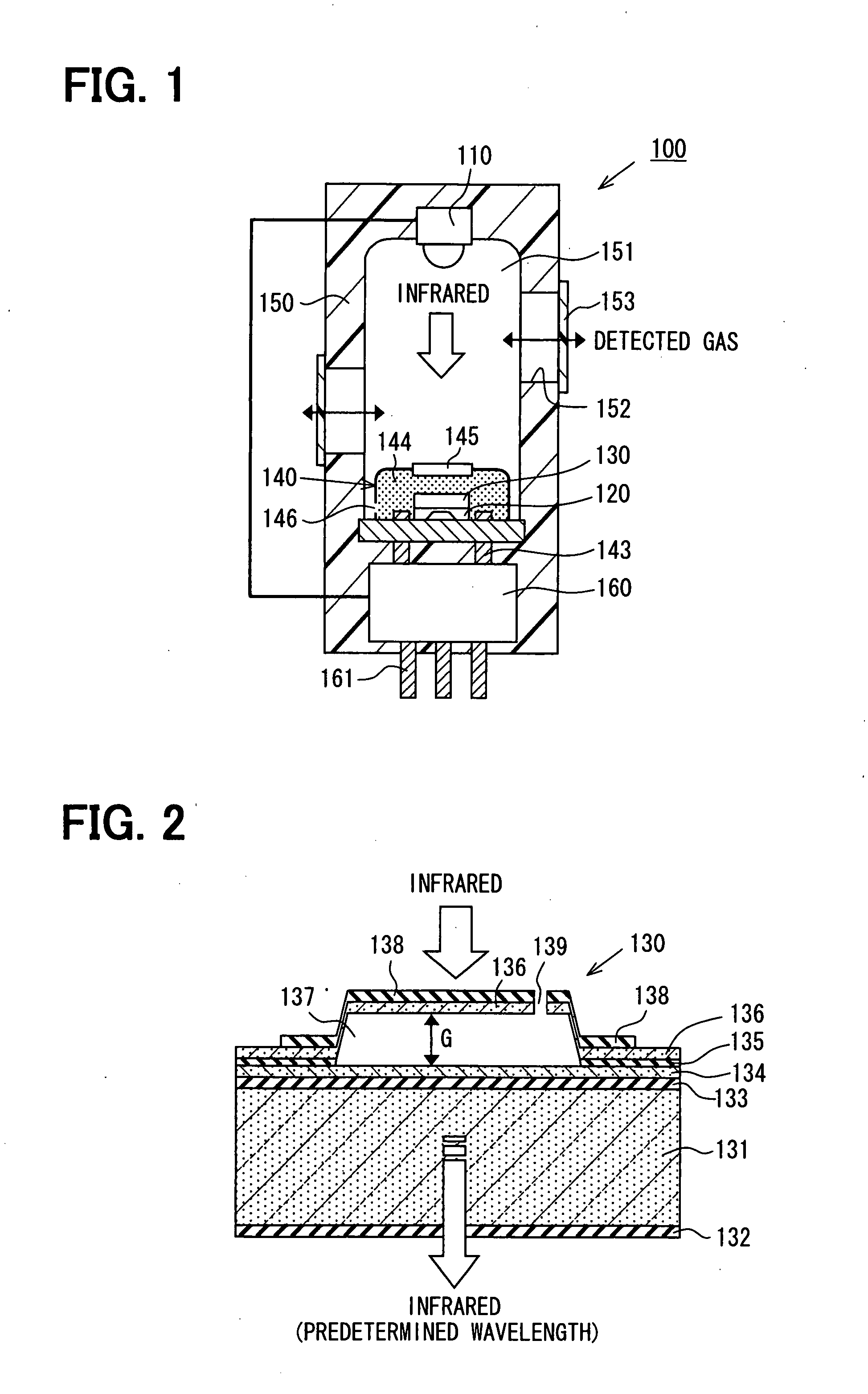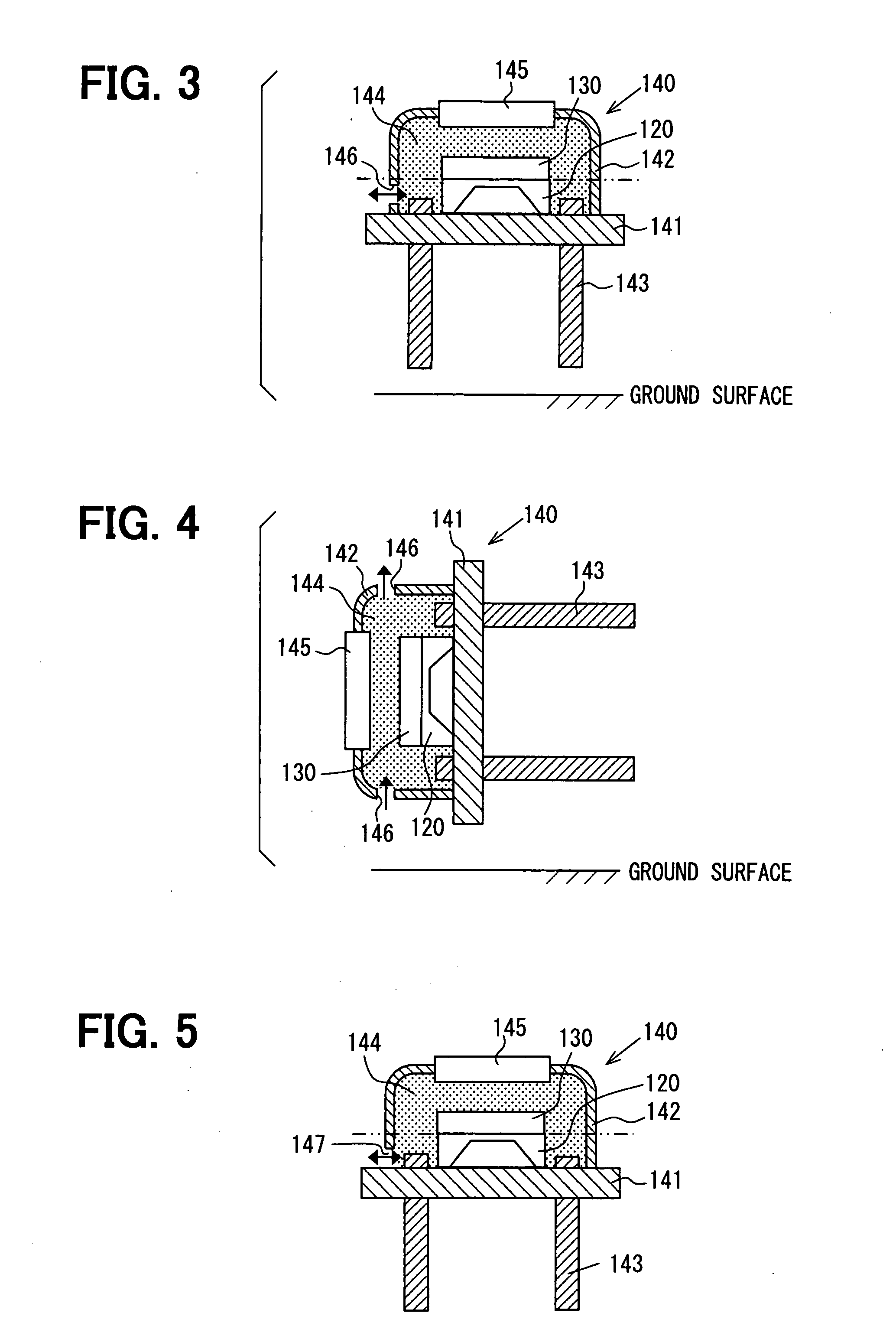Infrared-type gas detector
a gas detector and infrared technology, applied in the field of infrared-type gas detectors, can solve the problem of unevenness in and achieve the effect of restricting the unevenness of the gap of the fabry-perot filter
- Summary
- Abstract
- Description
- Claims
- Application Information
AI Technical Summary
Benefits of technology
Problems solved by technology
Method used
Image
Examples
embodiments
First Embodiment
[0024]An infrared-type gas detector 100 according to a first embodiment of the present invention will be described with reference to FIGS. 1-5. As shown in FIG. 1, the infrared-type gas detector 100 has a light source 110 for radiating infrared, a first detection unit 120 for detecting infrared, a Fabry-Perot filter 130 which is arranged at a light path of the infrared from the light source 110 to the first detection unit 120 and through which the infrared having a predetermined wavelength passes (that is, infrared selectively passes Fabry-Perot filter 130), a can package member 140 (case member) in which the first detection unit 120 and the Fabry-Perot filter 130 are housed, and a housing 150 in which the light source 110, the first detection unit 120, the Fabry-Perot filter 130 and the case member 140 are accommodated.
[0025]The light source 110 can be constructed of any source which radiates the infrared having a predetermined wavelength field. For example, the li...
second embodiment
[0066]A second embodiment of the present invention is described with reference to FIG. 6.
[0067]In the above-described first embodiment, the ventilation portion (for example, through hole 146 and gap 147) is arranged at the case member 140 where the first detection unit 120 and the Fabry-Perot filter 130 are housed, to restrict the unevenness of the gap G of the Fabry-Perot filter 130. According to the second embodiment, as shown in FIG. 6, the inner space 144 of the case member 140 is substantially hermetically sealed and set at a pressure-reducing state (e.g., vacuum state) as compared with the atmosphere.
[0068]According to the second embodiment, because the inner space 144 of the case member 140 is in the decompression state (attenuated state) as compared with the atmosphere, the pressure variation (unevenness of resistance due to gas) of the inner space 144 in response to the temperature variation can be reduced as compared with the conventional device where the pressure in the i...
third embodiment
[0072]A third embodiment of the present invention is described with reference to FIG. 7.
[0073]According to the above-described second embodiment, the inner space 144 is provided with the decompression state (pressure-reducing state) as compared with the atmosphere to reduce the unevenness of the gap G of the Fabry-Perot filter 130. In contrast, according to the third embodiment, the pressure state of the inner space 144 is not specially limited, while a second detection unit 170 is arranged in the inner space 144 of the case member 140 to detect at least one of the temperature and the pressure in the inner space 144. Based on the detection result of the detection unit, the control unit (correction control unit) of the circuit chip 160 can correct and control the voltage applied to the Fabry-Perot filter 130.
[0074]As shown in FIG. 7, the second detection unit 170 (e.g., pressure sensor) is arranged in the inner space 144 of the case member 140. The second detection unit 170 is constr...
PUM
 Login to View More
Login to View More Abstract
Description
Claims
Application Information
 Login to View More
Login to View More - R&D
- Intellectual Property
- Life Sciences
- Materials
- Tech Scout
- Unparalleled Data Quality
- Higher Quality Content
- 60% Fewer Hallucinations
Browse by: Latest US Patents, China's latest patents, Technical Efficacy Thesaurus, Application Domain, Technology Topic, Popular Technical Reports.
© 2025 PatSnap. All rights reserved.Legal|Privacy policy|Modern Slavery Act Transparency Statement|Sitemap|About US| Contact US: help@patsnap.com



